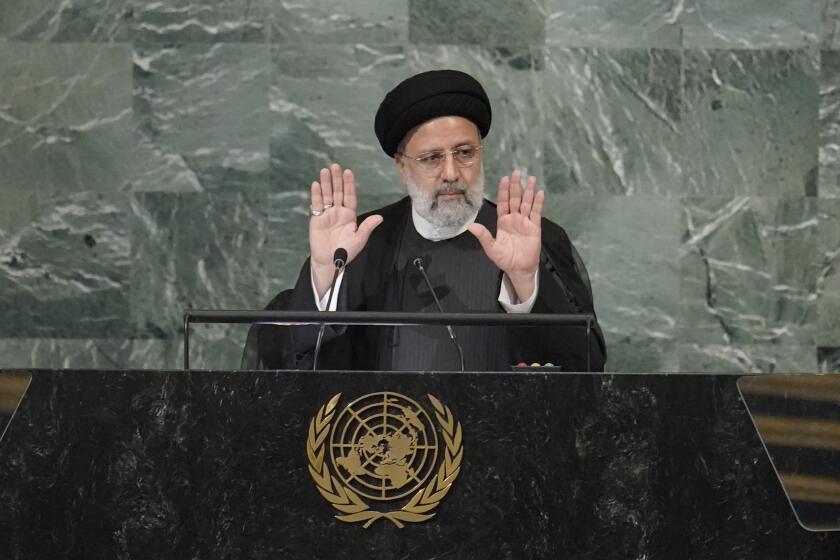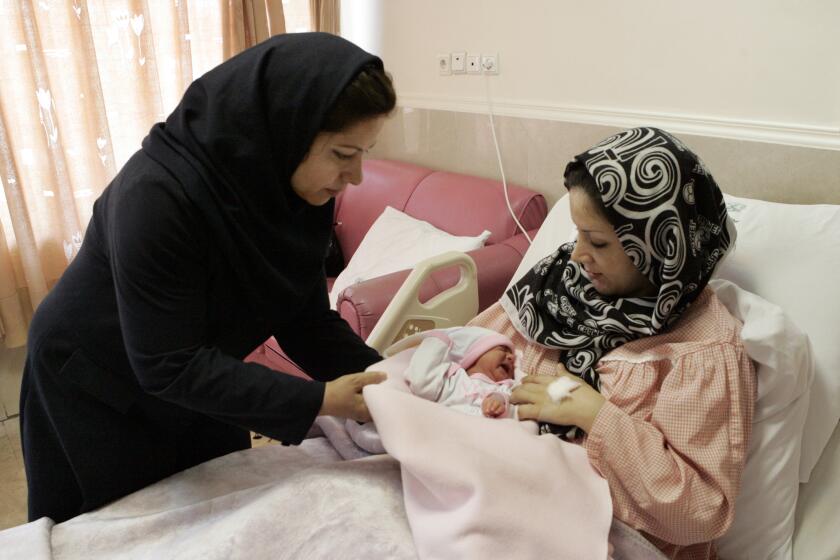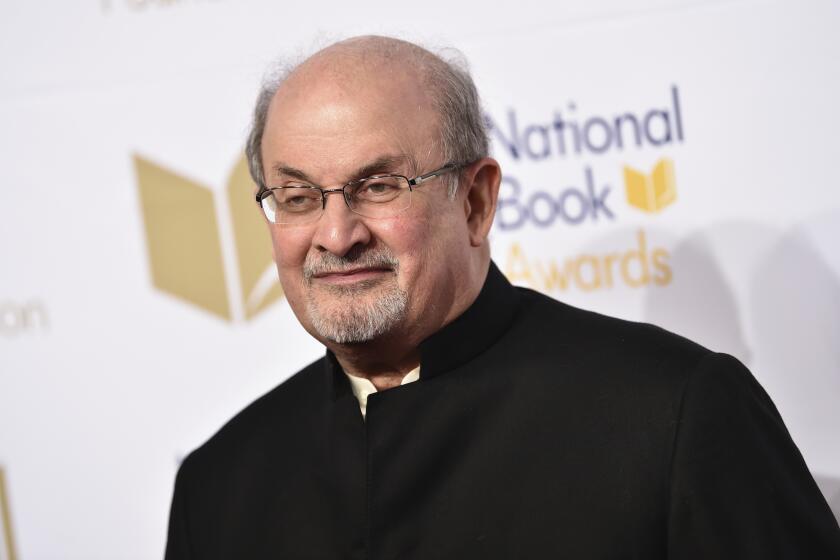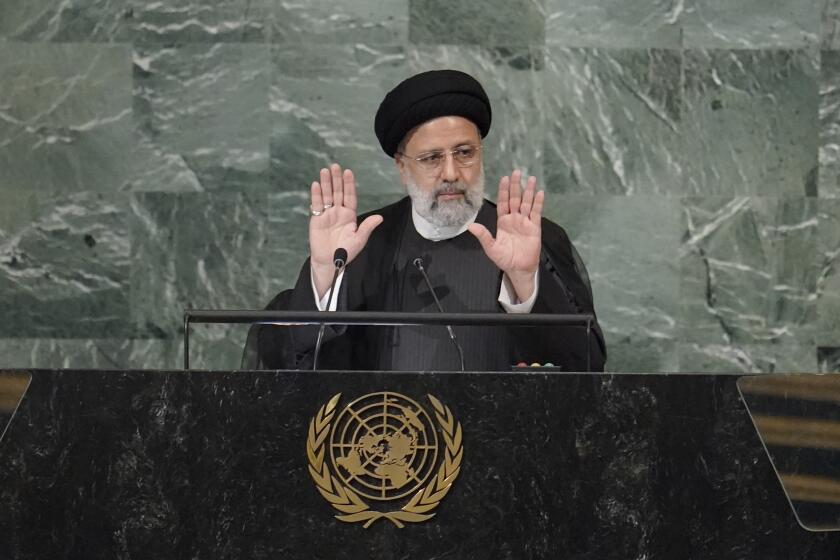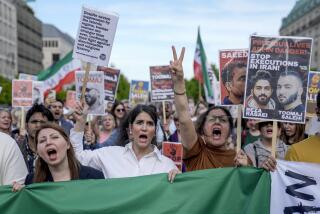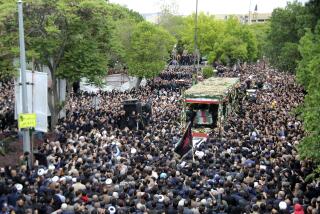At least 9 killed in Iran as protests over womanâs death in custody spread
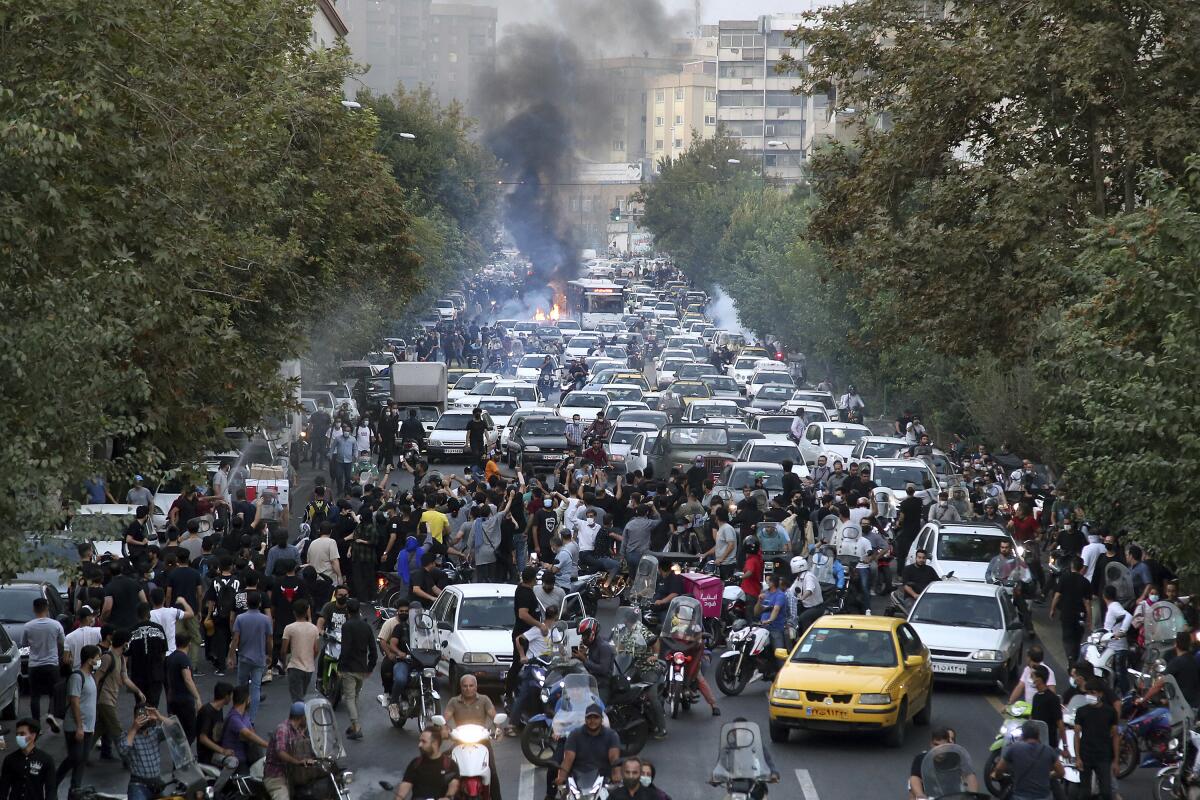
DUBAI â Clashes between Iranian security forces and protesters angry over the death of a 22-year-old woman in police custody have killed at least nine people since the violence erupted over the weekend, according to a tally Thursday by the Associated Press.
The scope of Iranâs ongoing unrest, the worst in several years, still remains unclear as protesters in at least a dozen cities â venting anger over social repression and the countryâs mounting crises â continue to encounter security and paramilitary forces.
To prevent protests from spreading, Iranâs biggest telecom operator largely shut down mobile internet access again Thursday, said Netblocks, a group that monitors internet access, describing the restrictions as the most severe since 2019.
An anchor on Iranâs state television suggested Thursday the death toll from the mass protests could be as high as 17, but he did not say how he reached that figure.
In a country where radio and television stations already are state-controlled and journalists regularly face the threat of arrest, the paramilitary Revolutionary Guard urged the judiciary Thursday to prosecute âanyone who spreads fake news and rumorsâ on social media about the unrest. Widespread outages of Instagram and WhatsApp, which are used by protesters, also continued Thursday.
WhatsApp tweeted that it was âworking to keep our Iranian friends connected and will do anything within our technical capacity to keep our service up and running.â
The demonstrations in Iran began as an emotional outpouring over the death of Mahsa Amini, a young woman held by the countryâs morality police for allegedly violating its strictly enforced dress code. Her death has sparked sharp condemnation from the United States, the European Union and the United Nations.
Speaking at the U.N. on Wednesday, Ebrahim Raisi accused the West of âdouble standardsâ on human rights.
The U.S. government imposed sanctions on the morality police and leaders of other Iranian security agencies, saying they âroutinely employ violence to suppress peaceful protesters.â
The police say she died of a heart attack and was not mistreated, but her family has cast doubt on that account. Independent experts affiliated with the U.N. said Thursday that reports suggested she was severely beaten by the morality police, but did not offer evidence.
Niloufar Hamedi, a journalist who took photographs at the hospital after Aminiâs death, was arrested on Thursday, according to the reporterâs lawyer, Mohammadali Kamfirouzi. He said her house was raided. There was no official comment.
The protests have grown in the last five days into an open challenge to the government, with women removing and burning their state-mandated headscarves in the streets and Iranians calling for the downfall of the Islamic Republic itself.
âDeath to the dictator!â has been a common cry in the protests.
Alarmed by the nationâs low birth rate, the Iranian government is encouraging childbearing and imposing restrictions on abortion and contraception.
They are the most serious demonstrations since 2019, when protests erupted over a government hike in the price of gasoline. Rights groups say hundreds were killed in the crackdown that followed, the deadliest violence since the 1979 Islamic Revolution.
The latest protests are similarly widespread but seem to have much broader support among the population, with Iranians of all walks of life expressing fury at Aminiâs death and the governmentâs treatment of women.
Iranâs state-run media this week reported demonstrations in at least 13 cities, including the capital, Tehran. Videos online show security forces firing tear gas and water cannons to disperse the protests. London-based Amnesty International reported that officers also fired birdshot and beat protesters with batons.
Footage on social media from the northern city of Tabriz shows a young man allegedly shot by security forces bleeding in the street as protesters shouted for help.
Another video showed a policeman firing a shotgun at a demonstrator who was tearing down a pro-government billboard in the North Khorasan province. Itâs unclear whether he was wounded.
In another video, protesters can be seen torching a massive billboard showing Qassem Soleimani â Iranâs top general who was killed in a U.S. airstrike â in his hometown of Kerman. Soleimani has iconic status among government supporters.
At least nine people have died in the confrontations, according to an AP count based on statements from Iranâs state-run and semi-official media. In a statement Thursday, the Revolutionary Guard blamed the unrest on âIranâs enemies,â saying their âsedition will fail.â
Breaking News
Get breaking news, investigations, analysis and more signature journalism from the Los Angeles Times in your inbox.
You may occasionally receive promotional content from the Los Angeles Times.
In Aminiâs home province in the northwest, Kurdistan, the provincial police chief said four protesters were killed by live fire. In Kermanshah, the prosecutor said two protesters were killed, insisting that the bullets were not fired by Iranâs security forces.
Three men affiliated with the Basij, a volunteer force under the Guard, were killed in clashes in the cities of Shiraz, Tabriz and Mashhad, semiofficial media reported, bringing the death toll acknowledged by officials to at least nine on both sides.
Tehran has consistently denied carrying out operations abroad targeting dissidents, despite Western governments attributing such attacks to it.
In the province of Mazandaran, angry crowds damaged or set fire to more than 40 government properties and injured 76 security officers, Rouhollah Solgi, the deputy governor, said Thursday.
Iran has grappled with waves of protests in the recent past, mainly over a long-running economic crisis exacerbated by Western sanctions linked to its nuclear program. Iranians also blame government corruption and mismanagement.
The Biden administration and European allies have been working to revive the 2015 Iran nuclear accord, in which Iran curbed its nuclear activities in exchange for sanctions relief, but the talks have been deadlocked for months.
From New York, where Iranian President Ebrahim Raisi took the stage Wednesday at the U.N. General Assembly, CNNâs chief international anchor, Christiane Amanpour, said she had planned to confront Raisi about the protests roiling Iran in what would be his first U.S.-based interview.
Iranâs president insists that his country is serious about reviving a nuclear deal but questions U.S. reliability and commitment.
But Amanpour wrote on Twitter that when the interview was due to start, Raisi didnât show. An aide told her the president refused to take part unless she wore a headscarf given the âsituation in Iran.â The Iranian government did not immediately acknowledge her account.
âI couldnât agree to this unprecedented and unexpected condition,â the British-Iranian anchor wrote beside a photo of Raisiâs empty chair.
More to Read
Sign up for Essential California
The most important California stories and recommendations in your inbox every morning.
You may occasionally receive promotional content from the Los Angeles Times.
